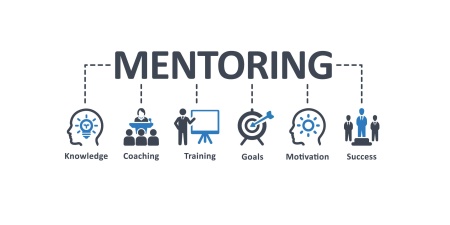The other day, I unpacked a box from storage and came across four old iPhones. I replaced them because the batteries stopped holding a charge, they started running slow, and because I really wanted a better camera and larger screen size.
The decision to upgrade my phone was relatively easy; but what about the decision to replace a website?
Below are six reasons why you should replace your website.
1. It’s over three years old. As a general rule, a website should be replaced every three years. In that time, the technology available to give your customers and prospects a good user experience will have changed enough to make it possible for the investment to quickly payoff.
2. It provides poor mobile experience. While your website might pass Google’s Mobile Friendly website test (check by visiting https://search.google.com/test/mobile-friendly), the mobile version still could be difficult to navigate and lousy at converting mobile visitors into leads or customers. If it is, it’s time to go.
3. Your website is slow. Today, we expect websites to operate at lightning speed. When they don’t, we show our disappointment with a click of our mouse to leave. Google knows this and has incorporated speed as a primary element of its ranking algorithm.
4. It doesn’t convert. When you can’t remember the last time your website generated a good lead or sale, it is time to take action.
The cause of this is usually one of two things. Your website either doesn’t get any traffic or it’s not configured to convert visitors into prospects or customers.
A lack of traffic could be due to poor technical or content SEO, a lack of an effective advertising program, or low brand awareness.
A poor conversion rate could be due to the site’s navigational structure, inadequate content, or ineffective calls to action.
Any of these issues, if not easily fixable, would be reason enough to replace your website.
5. Your brand message or look have changed.
6. Your site looks old. This is no different than when your store starts to show its age, or your conference room is outfitted with furniture from 1950. It’s time for a facelift. Out with the old, in with the new.
Six Considerations for Your New Website
Building a new website can change the trajectory of your business for the next several years. Therefore, it is important that you get it right.
But, unless you build websites for a living, you can’t be familiar enough with all the options to make the best decisions. After nearly 20 years in the digital marketing business and building hundreds of websites, here are my top six items to consider when scoping out a website project.
1.Decide on your primary message. What message do you want visitors to take away from a visit to your website? Most likely the answer is what you do and who you do it for.
Although controversial as to their impact on conversion rate, large banner images (or rotating banners) are the current standard for sending that message.
2. Design great navigation bars. How can you make it extremely easy for prospects to find what they are looking for?
With the popularity of long scrolling pages and an increasing amount of content on websites, a traditional top navigation menu doesn’t provide enough information to facilitate a good user experience.
Mega menus, or larger more informative menus that expand from a top navigation bar, can help simplify your site’s navigation. The photo above is an example of one we developed for a client, Excel Dryer (manufacturer of the XLERATOR hand dryer.)
You should also consider making your top navigation bar sticky, so that it remains pinned to the top of a browser window as visitors scroll down a page.
3. Include useful tools. What tools can you offer to make buying from you an easier decision? While every situation is unique, cost savings calculators are effective as are product quote tools or configurators.
Two great examples from clients we work with are Excel Dryer’s paper towel vs. hand dryer cost savings calculator (https://www.exceldryer.com/calculator-dial/) and WireCrafters request a quote tool (https://www.wirecrafters.com/products/request-a-quote/).
4. Define content functionality. How often will you change the information on your website?
This is important to know because while virtually any content manipulation or display functionality is possible from a coding standpoint, making something a requirement limits your technology choices and adds to the cost of the project.
Control your impulse to add a content bell or whistle unless that feature will be used often enough to justify the expense.
I recently worked with a client to develop a very tight website requirements document. By the time we were done “dreaming,” the project price had grown to the point that we couldn’t see a path to recover the costs of the project in a reasonable period.
This made us take a second pass at the requirements document and we were able to cut 33% out of the project cost.
As an example, we eliminated the development of back end functionality, which would have automated the way content was replicated on different parts of the website. While this tool would have saved labor over time, the content on the front end of the website was not planned to change with enough frequency to justify the development cost.
5. Add multiple conversion paths. How do your visitors want to connect with you? Sometimes a form is fine, but when time is of the essence, or your visitors are using a mobile device, a phone number or live chat tool are better options.
For phone numbers, a best practice is to use a call tracking solution that allows you to dynamically change the phone number that appears on your website depending on how the visitor found you. This allows data to be recorded in Google Analytics so that you can associate value to individual marketing tactics.
6. Add great content. How can you best demonstrate the advantages of your product or service?
Ideally, your website should contain content sufficient to answer the questions prospects have as they move through their buying process – identification of a problem, search for solutions, evaluate options and buy (and rebuy).
Many of those questions can be answered in blog articles, case studies and testimonials.
Product/service pages are great for descriptions, specifications, install/use manuals, and other related documentation.
Too many companies fall short of delivering great content when they skimp on the use of high-quality images and video.
Suppliers would be well served to make product descriptions, data, images, and video available to channel partners.
Distributors should focus on creating content that demonstrates their value added – service and expertise. Application, installation and repair videos and images are great here.
Summary
Developing a website is a long process. In addition to the outsourced labor cost, it requires an internal commitment for the company to support the project by developing content or applying its knowledge of the industry to shape a site that will be seen as valuable to visitors.
In this article, we’ve talked about why and when you should replace your website, and the items you should consider when you do.
While many business owners head into the office five or more days per week, they can go weeks or months without visiting their company website. These folks are sure to notice any peeling paint, or a stray cigarette butt outside the entrance to their store or facility, but the chances of them noticing a broken website link or difficult to navigate form are minimal.
Today, though, I would argue that in many cases the appearance and functionality of your website are more important than that of your office.
It is time to expand your area of focus to include your website and apply your high standards to the online experience you provide customers and prospects.
Doing this will pay off in a big way!







